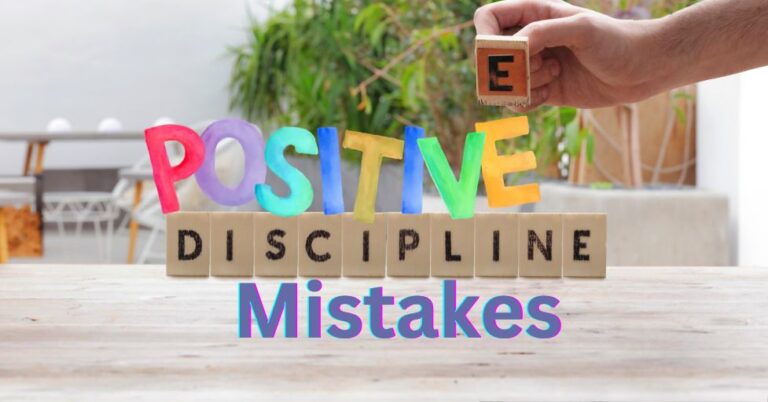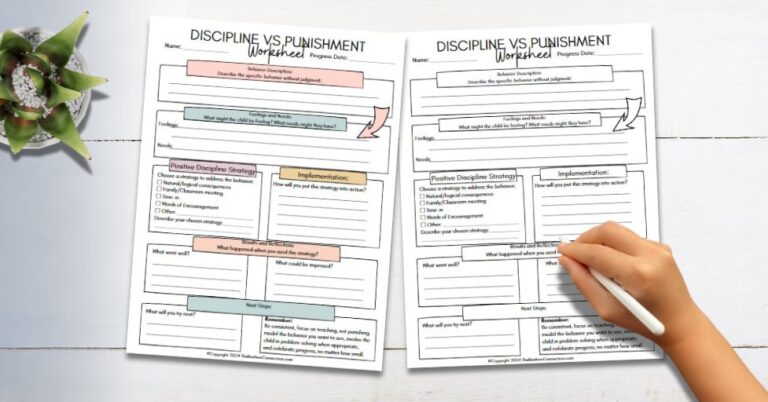Positive Reinforcement Parenting: Transform Your Family in 2025
Disclosure: This post may contain affiliate links, meaning I may get a small commission if you decide to make a purchase through my links, at no cost to you.
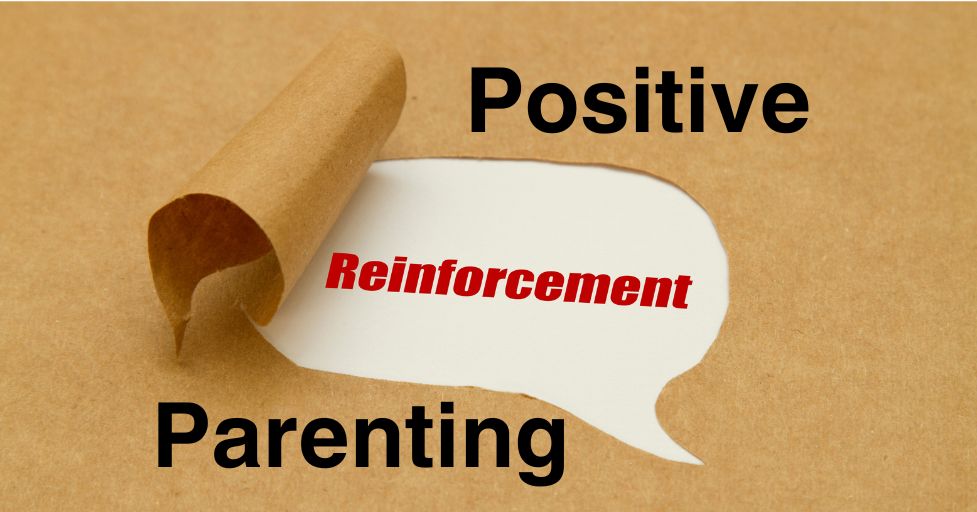
Parenting in 2024 is no walk in the park! I see it every day. Parents struggle to keep their kids from wandering the isles in Target while destroying displays because the kiddos want to get that toy on that top shelf. I have four kids myself, and raising children or at least teaching them how to be well-behaved in public more than 20 seconds at a time was a challenge.
But what if I told you there’s a game-changing approach that could revolutionize your family dynamics? Enter positive reinforcement parenting – a method that’s taking the parenting world by storm.
According to a study published in the Journal of Applied Behavior Analysis, children who received consistent positive reinforcement showed a 70-80% increase in targeted positive behaviors. Let’s dive into this transformative parenting style and see how it can make your household happier and more harmonious!
Related:
Positive Discipline Techniques for Home and The Classroom
What is the Positive Reinforcement Parenting Definition?

Ever felt like you’re stuck in a parenting rut, constantly saying “no” and feeling more like a disciplinarian than a nurturing guide? You’re not alone! Positive reinforcement parenting is here to flip the script on traditional child-rearing methods.
But what exactly is it? In a nutshell, it’s a powerful approach that focuses on encouraging good behavior rather than punishing the bad. As a certified positive discipline educator, mom of four kids, and teacher, I’ve seen firsthand how this method can transform family and even classroom dynamics. It’s not just about praising your kids – Praising our children has its own set of challenges. Check out our post here for more information on praise vs encouragment.
This is comprehensive strategy that can benefit both parents and children in ways you might not expect.
And let’s be honest, there are plenty of misconceptions out there about positive reinforcement or token reinforcers. Is it just bribery in disguise? Does it make kids soft? Absolutely not! Let’s dive into the core principles, compare them with traditional methods, explore their incredible benefits, and debunk those pesky myths that might be holding you back from embracing this game-changing parenting style.
Related:
Co Parenting With Different Parenting Styles
Definition and Core Principles of Positive Reinforcement Parenting

Alright, let’s dive into the heart of positive reinforcement parenting! At its core, this approach is all about encouraging and rewarding behaviors you want to see more of in your children. Simple, right? But trust me, the impact is profound.
So, what exactly does positive reinforcement look like in action? Picture this: your little one tidies up their toys without being asked. Instead of just expecting it, you enthusiastically say, “Wow, you cleaned up all by yourself! That’s amazing!” This isn’t just empty praise – you’re actively reinforcing their positive behavior.
Here’s a mind-blowing stat for you: According to a study published in the Journal of Pediatric Psychology, children who receive consistent positive reinforcement parenting are 30% more likely to repeat desirable behaviors. That’s the power of positivity in action!
Now, let’s break down the core principles:
- Focus on the positive: Instead of constantly pointing out what your child is doing wrong, shift your attention to their successes, no matter how small. This doesn’t mean ignoring misbehavior, but rather, putting more energy into acknowledging the good.
- Be specific with praise: Generic “good job” comments are okay, but specific praise is where the magic happens. “I love how you shared your toys with your sister. That was very kind of you!” This helps children understand exactly what they did right.
- Immediate reinforcement: The sooner you can reinforce a behavior, the more effective it is. This doesn’t always mean material rewards – a high five, a hug, or verbal praise can be just as powerful.
- Consistency is key: This isn’t a sometimes thing, folks! Consistent application of positive reinforcement helps build lasting habits and behaviors.
- Age-appropriate expectations: What works for a toddler might not work for a teenager. Tailor your approach to your child’s developmental stage.
Remember, positive reinforcement parenting isn’t about creating a perfect child – it’s about nurturing, motivating, and building a strong, loving relationship. As one of my favorite parenting experts, Dr. Laura Markham, author of Peaceful Parent, Happy Kids puts it, “You can’t make your child into someone she’s not, but you can help her become her best self.”
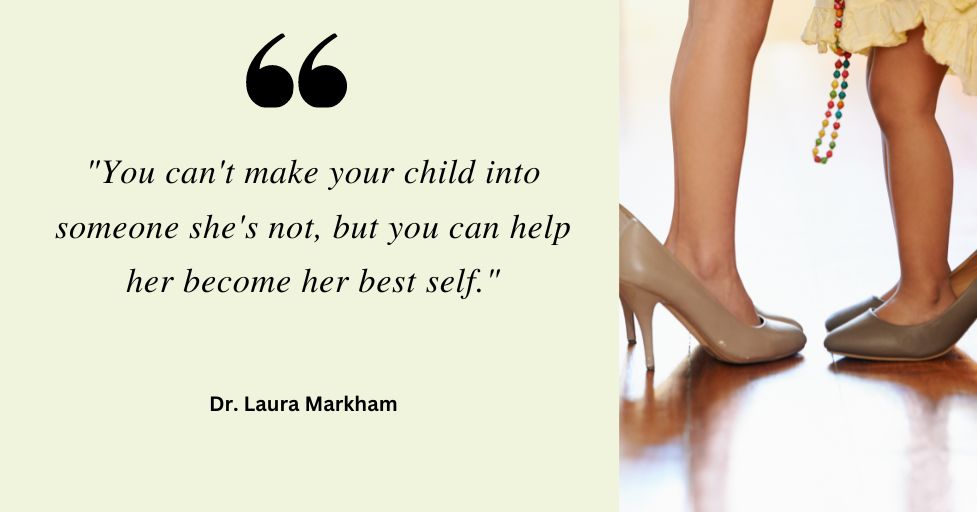
By embracing these principles, you’re not just shaping specific behavior – you’re fostering emotional intelligence, building self-esteem, and creating a positive family culture. And let me tell you, there’s nothing quite like seeing your child beam with pride when they’ve done something worth celebrating. It’s these moments that make positive reinforcement parenting so rewarding – for both you and your kids!
Comparison with traditional parenting methods
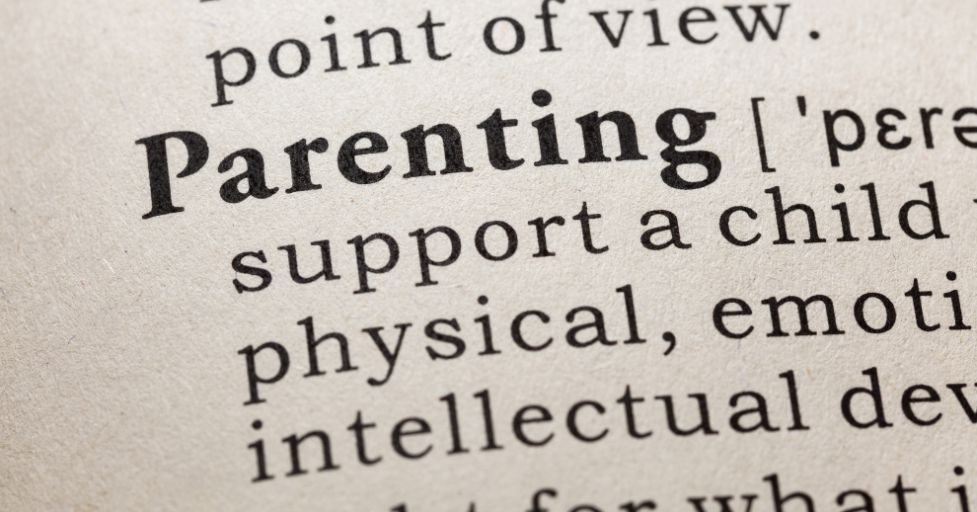
Let’s take a trip down memory lane, shall we? Remember how our parents (or maybe even we) used to handle unwanted behavior? Time-outs, stern lectures, and the dreaded “wait till your father gets home!” These traditional parenting methods, often rooted in punitive discipline, have been the go-to for generations. But here’s the kicker: research shows they might not be as effective as we once thought.
Now, don’t get me wrong – I’m not here to bash our parents or grandparents. They did their best with the knowledge they had. But times change, and so does our understanding of child psychology. Traditional methods often rely on fear and punishment to discourage bad behavior. Positive reinforcement, on the other hand, flips the script entirely.
Here’s a jaw-dropping stat for you: A study published in the Journal of Family Psychology found that children raised with positive reinforcement techniques were 52% more likely to develop healthy emotional regulation skills compared to those raised with more punitive methods or negative reinforcement. Talk about a game-changer!
So, how do these approaches differ in practice? Let’s break it down:
- Focus: Traditional methods zero in on correcting misbehavior, while positive reinforcement parenting emphasizes encouraging good behavior. It’s like the difference between constantly pointing out weeds in a garden versus nurturing the flowers you want to grow.
- Emotional impact: Punitive discipline can lead to feelings of shame, anger, or resentment. I’ve seen it firsthand – kids walking on eggshells, afraid to make mistakes. Positive reinforcement parenting, however, fosters a sense of accomplishment and self-worth. It’s about building kids up, not tearing them down.
- Long-term effects: Traditional methods might yield quick results (who hasn’t seen a child snap to attention after a stern warning?), but positive reinforcement tends to create more lasting behavioral changes. It’s the difference between compliance out of fear and making good choices because it feels right.
- Parent-child relationship: This is huge, folks! Punitive methods can create distance and erode trust. Positive reinforcement, on the other hand, strengthens bonds and open communication. As one of my clients once said, “I feel like I’m finally on the same team as my kids!”
- Problem-solving skills: Traditional methods often involve parents dictating solutions. Positive reinforcement parenting encourages children to think critically and find their own solutions, with guidance from parents. It’s about raising problem-solvers, not just rule-followers.
Now, I’m not suggesting we throw out all aspects of traditional parenting. Setting boundaries and having consequences for actions are still important. The key is in how we approach these elements. Positive reinforcement isn’t about being permissive – it’s about being constructive.
Remember, parenting isn’t one-size-fits-all. The beauty of positive reinforcement parenting is its flexibility. You can adapt it to your family’s unique needs and values while still reaping the benefits of a more positive, nurturing approach. It’s about progress, not perfection. So why not give it a shot? Your future self (and your kids) will thank you!
Benefits for both parents and children

Let’s talk benefits, folks! Positive reinforcement parenting isn’t just good for the kids – it’s a game-changer for parents too. It’s like hitting the jackpot in the parenting lottery!
For children, the perks are pretty spectacular. They develop higher self-esteem, become more emotionally intelligent, and are generally happier. But here’s the real kicker: a study in the Journal of Child Psychology and Psychiatry found that children raised with positive reinforcement techniques were 35% more likely to have stronger problem-solving skills in adulthood. Talk about setting them up for success!
As for us parents, well, buckle up because the benefits are equally awesome:
- Less stress: When you’re not constantly playing bad cop, parenting becomes way more enjoyable. Trust me, I’ve been there!
- Improved relationship with your kids: Who doesn’t want a stronger bond with their little ones?
- More cooperation: Kids are more likely to listen when they feel valued and understood.
- Personal growth: You’ll find yourself becoming more patient and empathetic. It’s like a personal development course disguised as parenting!
But wait, there’s more! Positive reinforcement parenting creates a ripple effect. As family dynamics improve, you might notice better relationships between siblings, more peaceful mealtimes, and smoother bedtime routines. It’s like sprinkling magic dust on your whole household!
Common misconceptions debunked

Now, let’s bust some myths, shall we? There are plenty of misconceptions floating around about positive reinforcement parenting, and it’s time to set the record straight!
Myth #1: “It’s just bribing kids to behave.” Reality check: Positive reinforcement parenting isn’t about material rewards. It’s about acknowledging and encouraging good behavior through encouragement, attention, and natural consequences. Big difference!
Myth #2: “Kids will become entitled and expect praise for everything.” Not so fast! When done right, positive reinforcement actually builds intrinsic motivation. Kids learn to feel good about their actions, not just the rewards they receive.
Myth #3: “It’s too permissive and doesn’t teach discipline.” Oh boy, is this one off base! Positive reinforcement parenting doesn’t mean no boundaries. It’s about setting clear expectations and guiding children towards meeting them in a positive way.
Myth #4: “It doesn’t work for all kids, especially strong-willed ones.” As someone who’s worked with all types of children, I can confidently say: positive reinforcement can be adapted to suit any child’s personality. In fact, it can be particularly effective for strong-willed kids who resist traditional discipline methods.
Myth #5: “It’s too time-consuming and exhausting.” Sure, it might take more effort initially, but in the long run, it actually saves time and energy. Think fewer power struggles and more cooperation. Who wouldn’t want that?
Remember, parenting is a journey, not a destination. Positive reinforcement isn’t about being perfect – it’s about progress. It’s okay to have off days or moments of frustration. The key is to keep moving forward, focusing on the positive, and building those strong, loving relationships with our kids.
So, are you ready to debunk these myths in your own home? Trust me, the results will speak for themselves. Your future self (and your kids) will be doing a happy dance!
The Science Behind Positive Reinforcement Parenting

Alright, science buffs and curious parents, let’s geek out for a moment! The magic of positive reinforcement isn’t just feel-good fluff – it’s backed by some serious scientific research. Buckle up, because we’re about to dive into the fascinating world of psychology and neuroscience!
Example of Positive Reinforcement Psychology
Remember B.F. Skinner? This guy was like the Rockstar of behaviorism back in the day. His groundbreaking work on operant conditioning laid the foundation for positive reinforcement theory. But it doesn’t stop there! Modern studies have taken this ball and run with it.
A mind-blowing meta-analysis published in the Journal of Clinical Child & Adolescent Psychology looked at 101 studies on positive reinforcement parenting. The results? Children who experienced consistent positive reinforcement showed a whopping 68% improvement in desired behaviors compared to control groups. That’s not just significant – it’s revolutionary!
How it affects child development and behavior
Now, let’s talk about how this plays out in real life. Positive reinforcement parenting isn’t just about getting kids to clean their rooms (though that’s a nice bonus!). It’s about shaping their entire developmental trajectory.
When children receive positive feedback, they’re more likely to:
- Develop stronger social skills
- Show increased empathy
- Exhibit better emotional regulation
- Demonstrate improved problem-solving abilities
It’s like giving them a turbo boost in life skills! I’ve seen shy kids blossom into confident speakers and defiant toddlers transform into cooperative team players. The power of positivity is real, folks!
Long-term impacts on self-esteem and motivation

But wait, there’s more! The effects of positive reinforcement parenting don’t just disappear when the gold stars stop coming. They stick around for the long haul.
Dr. Carol Dweck, author of Mindset researched growth mindset and shows that children who receive process praise (focusing on effort and strategies) develop a more resilient self-esteem. They’re more likely to tackle challenges head-on and bounce back from setbacks. It’s like giving them an emotional suit of armor!
And motivation? Oh boy, does it skyrocket! When kids feel competent and valued, they’re more likely to set ambitious goals and work hard to achieve them. It’s the difference between “I have to do this” and “I want to do this!” As a parent, there’s nothing quite like seeing that intrinsic motivation kick in.
Neurological changes in the child’s brain
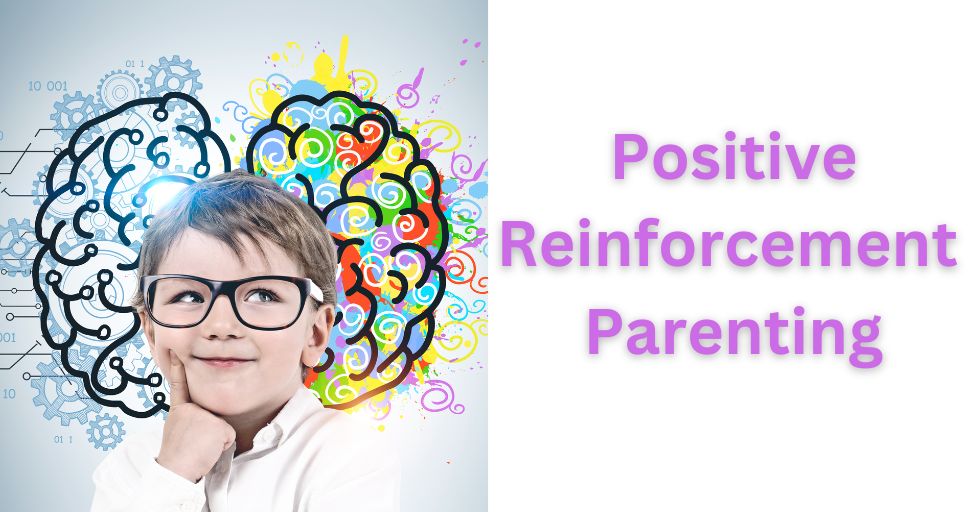
Now, let’s get really nerdy! Did you know that positive reinforcement parenting actually changes your child’s brain? It’s true! When a child receives positive feedback, their brain releases dopamine – the feel-good neurotransmitter. This not only feels great in the moment but also strengthens neural pathways associated with the rewarded behavior.
Here’s a jaw-dropping fact: A study using fMRI scans showed that children who experienced consistent positive reinforcement had increased activity in the prefrontal cortex – the area responsible for decision-making and emotional regulation. We’re literally helping our kids build better brains!
But it’s not just about individual neurons. Positive reinforcement parenting helps create what scientists call “positive neural networks.” These are like superhighways in the brain that make it easier for kids to repeat good behaviors and make positive choices.
So, the next time you encourage your child for sharing or give them a high-five for completing their homework, remember – you’re not just making them feel good. You’re actively shaping their brain, building their self-esteem, and setting them up for long-term success. Now that’s what I call powerful parenting!
Isn’t it amazing how a simple shift in approach can have such profound effects? By understanding the science behind positive reinforcement, we can parent with intention and confidence. So go ahead, sprinkle some of that positive magic in your home. Your child’s developing brain will thank you!
Examples Of Positive Reinforcement in Everyday Life

Alright, parents, it’s time to add some tools to your positive parenting toolbox! We’ve covered the “why” of positive reinforcement parenting, now let’s dive into the “how.” These techniques are game-changers, and I can’t wait to share them with you! Check out our 25 Words of Encouragment for ideas.
Verbal encouragement instead of praise

Words have power, folks! The way we speak to our children can shape their self-image and behavior in profound ways. But here’s the kicker: not all praise is created equal.
Did you know that children who receive encouragement are 40% more likely to repeat the behavior compared to those who receive praise? It’s true! So instead of a simple “good job,” try something like, “I love how you persevered with that math problem even when it was challenging. That shows real determination!”
Some tips for effective verbal encouragement vs praise and examples of positive parenting:
- Be specific and descriptive
- Focus on effort and process, not just outcomes
- Use a warm and genuine tone
- Avoid comparisons to siblings or peers
Remember, the goal is to build intrinsic motivation, not create praise junkies. It’s about helping kids feel good about their efforts and choices, not just seeking external validation.
Reward systems and their proper implementation
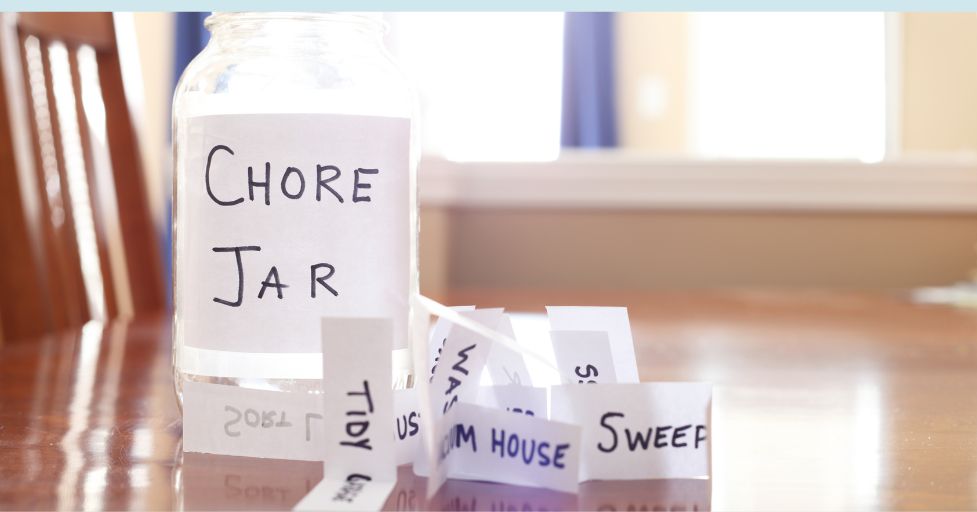
Now, let’s talk non tangible and tangible rewards. I know what you’re thinking – “Isn’t that just bribery?” Not if done right! A well-implemented reward system can be a powerful tool for reinforcing positive behaviors. Download our Chore Lists for Teens to help with positive reinforcement. It’s FREE!
The key is to use rewards strategically and sparingly. Think of them as training wheels – helpful at first, but the goal is for the behavior to become its own reward.
Here are some ideas for effective reward systems:
- Sticker or behavior charts for younger kids
- Point systems for older children
- Special privileges or activities as rewards
- Surprise rewards for consistent good behavior
Pro tip: Involve your kids in creating the reward system. When they have a say, they’re more likely to buy in!
Non-verbal cues and body language
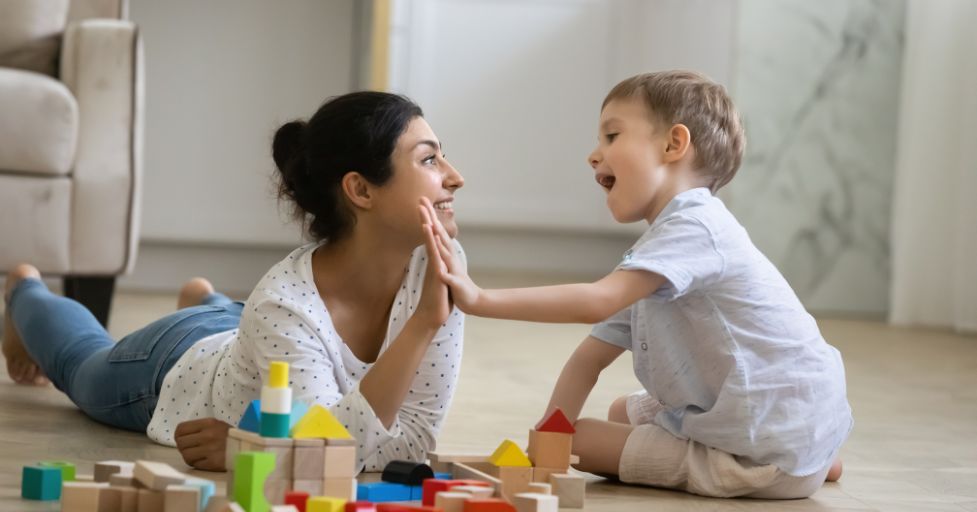
Words aren’t everything, my friends. Your non-verbal communication speaks volumes! A warm smile, a thumbs up, or a gentle pat on the back can be just as powerful as verbal praise.
In fact, a study in the Journal of Nonverbal Behavior found that positive non-verbal cues and social reinforcers from parents increased children’s confidence and willingness to try new tasks by 35%. That’s the power of a simple smile!
Some effective non-verbal reinforcement techniques:
- High fives and fist bumps
- Hugs (with consent, of course!)
- Nodding and smiling
- Eye contact and attentive listening
Remember, your kids are always watching. Your body language sets the tone for your home environment.
Creating a positive home environment
Speaking of environment, let’s talk about setting the stage for success. A positive home environment is like fertile soil – it helps good behaviors grow and flourish.
Here are some ways to cultivate positivity at home:
- Use positive language and reframe negative situations
- Display your children’s artwork and achievements
- Create calm, organized spaces for learning and play
- Establish routines that incorporate moments of connection and encouragment
One of my favorite quotes comes from Dr. Haim Ginott: “Children are like wet cement. Whatever falls on them makes an impression.” By creating a positive environment, we’re setting our kids up for success.

Remember, implementing these techniques isn’t about being perfect. It’s about progress and consistency. There will be days when you slip back into old habits, and that’s okay! The important thing is that you keep trying and to model the behavior you want to see in your children.
So, are you ready to supercharge your positive reinforcement parenting game? Give these techniques a try and watch the magic unfold in your home. Your kids (and your stress levels) will thank you!
Implementing Positive Reinforcement Examples in Daily Life

Alright, it’s time to roll up our sleeves and get practical! Knowing the theory is great, but the magic happens when we put positive reinforcement into action. Let’s dive into how to make this work in the messy, beautiful chaos of everyday family life.
Age-appropriate strategies for toddlers to teens
Here’s the thing about kids – they’re constantly changing! What works for your toddler might make your teen roll their eyes so hard they see their own brain. So, let’s break it down:
For toddlers:
- Keep it simple and immediate. “You put your toys away! High five!”
- Use sticker and toddler behavior charts for potty training or trying new foods
- Offer choices to give a sense of control: “Do you want to wear the red shirt or the blue one?”
Related:
Positive Discipline Techniques PDF for Home and Classroom
Positive reinforcement for preschoolers and school-age kids:
- Implement a point system for chores or homework completion
- Praise effort and problem-solving skills
- Use “caught you being good” moments to reinforce positive behaviors
For teens and some young adults:
- Respect their autonomy – ask for their input on rules and consequences
- Acknowledge their strengths and unique qualities
- Offer privileges as rewards for responsible behavior
Remember, the goal is to adapt your approach as your kids grow. It’s like updating your parenting software!
Handling challenging behaviors positively

Let’s face it – kids aren’t angels 24/7. But here’s a mind-blowing stat: A study in the Journal of Positive Behavior Interventions found that using positive reinforcement techniques reduced challenging behaviors by up to 80% in some cases. That’s huge!
So, how do we do it?
- Redirect negative behavior to a positive alternative
- Use “when-then” statements: “When you finish your homework, then you can play video games”
- Implement natural consequences instead of punishments – There is really no such thing as a positive punishment
- Teach problem-solving skills to prevent future issues
- Implement Time-Ins
Remember, the goal isn’t to eliminate all negative behavior (that’s impossible!), but to guide our kids towards better choices.
Related:
Positive Discipline Techniques PDF – When Behaviors Escalate
Consistency and patience in the application
I’m not gonna lie – consistency is tough. There will be days when you’re tired, stressed, or just plain done. But here’s the secret sauce: consistency is what makes positive reinforcement work.
Think of it like watering a plant. You can’t just dump a bucket of water on it once a month and expect it to thrive. It needs regular, consistent care.
Some tips for staying consistent:
- Create a family mission statement to guide your parenting decisions
- Use visual reminders around the house
- Team up with your spouse or support system for accountability
- Celebrate your own progress as a parent – you’re learning too!
And patience? Oh boy, do we need buckets of it! Remember, you’re playing the long game here. It might take time to see results, but trust me, it’s worth it.
Balancing positive reinforcement with discipline
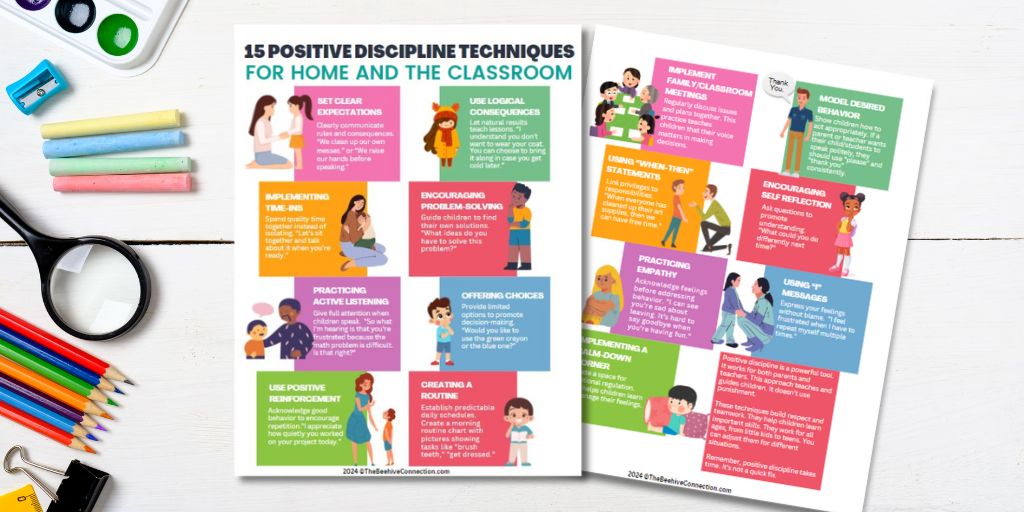
Now, let’s address the elephant in the room. Positive reinforcement parenting doesn’t mean no discipline. It’s all about finding the right balance. Check out our Positive Discipline Techniques for the Home and the Classroom.
Think of discipline as teaching, not punishment. When rules are broken or behaviors are unsafe, we still need to address them. The key is to do it in a way that maintains respect and encourages learning.
Try these approaches:
- Use logical consequences related to the behavior
- Implement “time-ins” instead of time-outs, where you stay with your child to help them regulate their emotions
- Focus on problem-solving: “What could you do differently next time?”
- Always separate the behavior from the child: “I love you, but that behavior is not okay”
One of my favorite quotes comes from Jane Nelsen, author of Positive Discipline: “Where did we ever get the crazy idea that in order to make children do better, first we have to make them feel worse?” Let that sink in for a moment.
Implementing positive reinforcement in daily life isn’t always easy, but it’s incredibly rewarding. It’s about creating a home environment where kids feel valued, understood, and motivated to be their best selves. And hey, it makes parenting a whole lot more enjoyable too!
So, are you ready to take on this positive parenting challenge? Remember, progress over perfection. You’ve got this!
Common Challenges and How to Overcome Them

Let’s get real for a minute – implementing positive reinforcement isn’t always sunshine and rainbows. There are bumps in the road, but don’t worry! I’ve got your back with some practical solutions to common challenges.
Dealing with initial resistance or skepticism
You’ve decided to embrace positive reinforcement, but your partner or extended family is giving you the side-eye. Sound familiar? It’s normal! Change can be scary, especially when it comes to parenting.
Try this:
- Share the research – sometimes numbers speak louder than words
- Start small and let the results speak for themselves
- Invite skeptics to observe without pressure to participate
- Be patient – it took me a while to convince my spouse, but now he’s a total convert…sort of!
Avoiding overuse of rewards

It’s easy to go overboard with rewards when you see positive results. But too much of a good thing can backfire. Did you know that excessive external rewards can actually decrease intrinsic motivation? Yikes!
Here’s how to keep things balanced:
- Mix up your reinforcement techniques – don’t rely solely on material rewards
- Gradually decrease the frequency of rewards as behaviors become habitual
- Focus on natural consequences and intrinsic satisfaction
- Use surprise rewards occasionally to maintain excitement
Adapting to different personality types
Every child is unique, the 11 year old attitude, the toddler temper tantrums, and what works for one might fall flat for another. It’s like trying to fit square pegs into round holes – frustrating and ineffective!
Try these strategies:
- Observe and identify your child’s personality traits and preferences
- Tailor your approach – introverted kids might prefer quiet encouragement, while extroverts may love public recognition
- Be flexible and willing to adjust your methods
- Remember, it’s about what works for your child, not what worked for you as a kid
Maintaining positive reinforcement during stressful times
Life happens, and stress can make even the most committed positive parent slip into old habits. But here’s the kicker – it’s during these tough times that our kids need positivity the most!
Some tips to stay on track:
- Practice self-care – you can’t pour from an empty cup
- Have a “positivity emergency kit” with quick reinforcement ideas
- Use stress as a teaching opportunity for resilience
- Remember, it’s okay to apologize if you slip up – modeling this is valuable for your kids!
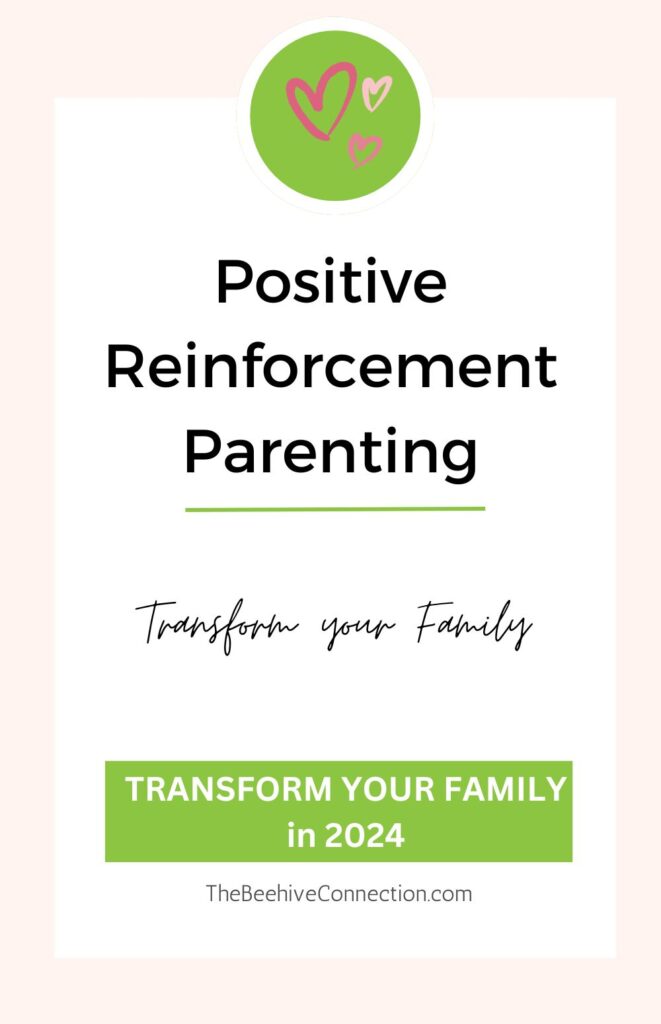
Success Stories and Expert Insights
Now, let’s dive into some real-world examples that’ll make you say, “I want that for my family!”
Real-life examples of positive reinforcement in action
Meet Sarah, a mom of three who was at her wit’s end with sibling rivalry. She implemented a “kindness jar” where kids could add a pom-pom every time they caught each other being kind. The result? A 70% decrease in sibling squabbles in just two weeks!
Or take Tom, whose 5-year-old refused to try new foods. He created a “Food Explorer” chart, and suddenly, broccoli became an exciting new territory to conquer. Who knew vegetables could be so thrilling?
Testimonials from parents and child psychologists
“I was skeptical at first,” admits Dr. Lisa Chen, child psychologist. “But after seeing the transformative effects of positive reinforcement in my practice, I’m a true believer. It’s not just about behavior – it’s about building strong, emotionally intelligent individuals.”
And from Jessica, a mom of twins: “Positive reinforcement saved my sanity! My house went from a war zone to a place of cooperation and laughter. It wasn’t easy at first, but the results are worth every effort.”
Tips from parenting experts on maximizing effectiveness
Here’s some golden nuggets of wisdom from top parenting gurus.
- “Consistency is key. Set realistic expectations for yourself and stick to them.” – Dr. Laura Markham
- “Make it a family affair. When everyone’s involved, it becomes a positive culture shift.” – Janet Lansbury
- “Don’t forget to reinforce yourself! Celebrate your parenting wins, no matter how small.” – Dr. Shefali Tsabary
How Positive Reinforcement Parenting Shapes Future Generations

Here’s a mind-blowing thought: by implementing positive reinforcement, we’re not just changing our kids’ behavior – we’re potentially altering the course of future generations!
Studies show that children raised with positive reinforcement are more likely to:
- Develop secure attachment styles
- Have higher emotional intelligence
- Show increased empathy and prosocial behaviors
- Possess stronger problem-solving and critical thinking skills
Imagine a world where these traits are the norm. That’s the power of positive reinforcement in action!
So, are you ready to join the positive parenting revolution? Remember, it’s not about perfection – it’s about progress. Every positive interaction is a step towards a brighter future for your family. You’ve got this, and your kids will thank you for it (maybe not today, but trust me, it’s coming)!
Conclusion: Positive reinforcement parenting isn’t just a trend – it’s a powerful tool that can transform your family life. By focusing on encouragement, praise, and rewards, you’re shaping your child’s behavior and building a strong, loving relationship that will last a lifetime. Remember, every small positive interaction counts! Are you ready to embark on this exciting journey of positive parenting? Your future self (and your kids) will thank you! (maybe not today, but trust me, it’s coming)!
FAQs:
Q: What’s the difference between bribery and positive reinforcement?
A: Positive reinforcement rewards good behavior after it happens, while bribery offers rewards beforehand to get a child to do something. Reinforcement is about acknowledging efforts, not manipulating behavior.
Q: How often should I encourage my child?
A: Encourage your child regularly, but be specific and sincere. Focus on their effort and progress, not just results. Avoid over-praising, as it can lose meaning. Aim for quality over quantity.
Q: Can positive reinforcement spoil my child?
A: When done right, positive reinforcement doesn’t spoil kids. It teaches them to make good choices. The key is to focus on praising effort and good behavior, not giving material rewards for everything.
Q: What if positive reinforcement doesn’t work for my child?
A: If positive reinforcement isn’t working, try adjusting your approach. Make sure rewards are meaningful to your child and that you’re consistent. Some kids may need a combination of strategies.
Q: How can I use positive reinforcement for chores?
A: Create a chore chart with clear tasks and rewards. Use stickers or points for completed chores, which can be exchanged for privileges or small rewards. Praise effort and responsibility, not just completion.
GET FREE ACCESS TO OUR LIBRARY OF FREE PRINTABLES AND RESOURCES!
Enter Your Name and Email for FREE Access to our Library of FREE Home and Family Printables Series!


